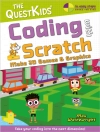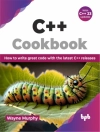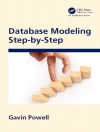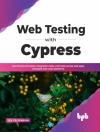Take control of Auto CAD for a more efficient, streamlined
workflow
Auto CAD Platform Customization is the most comprehensive
guide to streamlining and personalizing the Auto CAD platform. The
Auto LISP and VBA programming languages open up a myriad of
customization options, and this book provides expert guidance
toward applying them to Auto CAD, Civil 3D, Plant 3D, and other
programs based on the Autodesk Auto CAD platform. Detailed
discussions backed by real-world examples and step-by-step
tutorials provide user-friendly instruction, and downloadable
datasets allow for hands-on learning. Through customization you can
increase screen real estate, streamline workflows, and create more
accurate drawings by unleashing powerful programming languages that
allow the user to command the software how to work, instead of the
other way around.
Auto CAD customization is commonly performed by system
administrators and CAD managers, but senior drafters and savvy
users are increasingly taking customization into their own hands.
Auto LISP and VBA are two popular and versatile tools that allow for
going beyond the boundaries of normal user interface customization
options, allowing users to:
* Enforce drawing and CAD standards, and automate repetitive
tasks
* Customize the workspace, including tool sets, ribbon tabs and
panels, and palettes
* Modify graphical objects, set system variables, integrate with
external software, and more
* Manage blocks, change the interface, create dialog boxes, and
communicate with Microsoft Office applications
The ideal design environment puts the tools you need right at
your fingertips, removes unnecessary steps, and fosters precision
through good communication. Customizing, including applying
Auto LISP and VBA to Auto CAD, enables all of this and much more. For
the designer who needs to work smarter because it’s impossible to
work any harder, Auto CAD Platform Customization provides the
key information, insight, and techniques that will help to increase
your productivity with Auto CAD.
Table des matières
Introduction xxxi
Part I Auto CAD Customization: Increasing Productivity through Personalization 1
Chapter 1 Establishing the Foundation for Drawing Standards 3
Chapter 2 Working with Nongraphical Objects 35
Chapter 3 Building the Real World One Block at a Time 69
Chapter 4 Manipulating the Drawing Environment 99
Chapter 5 Customizing the Auto CAD User Interface for Windows 121
Chapter 6 Customizing the Auto CAD User Interface for Mac 167
Chapter 7 Creating Tools and Tool Palettes 183
Chapter 8 Automating Repetitive Tasks 201
Chapter 9 Defining Shapes, Linetypes, and Hatch Patterns 221
Chapter 10 Using, Loading, and Managing Custom Files 249
Part II Auto LISP: Productivity through Programming 261
Chapter 11 Quick Start for New Auto LISP Programmers 263
Chapter 12 Understanding Auto LISP 277
Chapter 13 Calculating and Working with Values 301
Chapter 14 Working with Lists 333
Chapter 15 Requesting Input and Using Conditional and Looping Expressions 359
Chapter 16 Creating and Modifying Graphical Objects 405
Chapter 17 Creating and Modifying Nongraphical Objects 461
Chapter 18 Working with the Operating System and External Files 489
Chapter 19 Catching and Handling Errors 513
Chapter 20 Authoring, Managing, and Loading Auto LISP Programs 533
Chapter 21 Using the Visual LISP Editor (Windows only) 567
Chapter 22 Working with Active X/COM Libraries (Windows only) 587
Chapter 23 Implementing Dialog Boxes (Windows only) 611
Part III Auto CAD VBA: Programming with VBA and Active X (Windows only) 643
Chapter 24 Understanding the Auto CAD VBA Environment 645
Chapter 25 Understanding Visual Basic for Applications 665
Chapter 26 Interacting with the Application and Documents Objects 701
Chapter 27 Creating and Modifying Drawing Objects 727
Chapter 28 Interacting with the User and Controlling the Current View 757
Chapter 29 Annotating Objects 795
Chapter 30 Working with Blocks and External References 819
Chapter 31 Outputting Drawings 865
Chapter 32 Storing and Retrieving Custom Data 891
Chapter 33 Modifying the Application and Working with Events 923
Chapter 34 Creating and Displaying User Forms 953
Chapter 35 Communicating with Other Applications 983
Chapter 36 Handling Errors and Deploying VBA Projects 1019
Index 1053
A propos de l’auteur
LEE AMBROSIUS is a Principal Learning Content Developer for the Auto CAD and Auto CAD LT products at Autodesk. He has worked on end-user and API documentation for eight releases, presented customization and programming sessions at Autodesk University for a decade, and has authored and coauthored several Auto CAD-related books.












